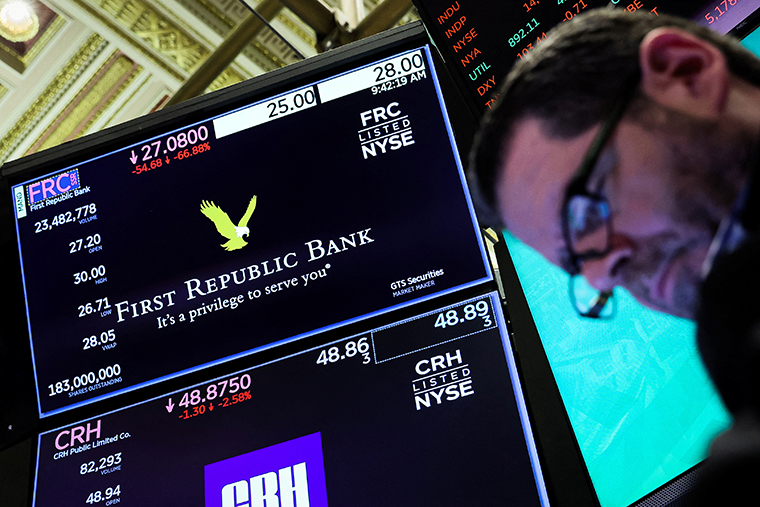
The Biden administration scrambled this weekend to restore confidence in the US banking system after the collapse of Silicon Valley Bank and Signature Bank.
But investors signaled in Monday trading that the plan wasn’t enough. Stocks of regional banks tumbled to record lows in Monday morning trading and were in and out of trading halts as their share prices moved remained volatile.
- Shares of First Republic fell nearly 69% Monday morning.
- Shares of Western Alliance Bancorp plummeted over 60%.
- PacWest Bancorp fell more than 30%.
- First Horizon stock fell about 26%.
So what explains the post-backstop plan plunge?
Wall Street remains worried that the Federal Reserve’s aggressive interest rate hikes will continue to roil regional banks.
Markets are anxious to know “whether the Fed will lift rates at all, or will they announce a pause in the monthly Quantitative Tightening program. Or both,” said Quincy Krosby, chief global strategist for LPL Financial.
It will be difficult to get an answer. The Fed just entered its mandated quiet period ahead of its policy meeting next week.
JPMorgan’s David Kelly said in a note Monday morning that the Biden administration’s plan may help a bit, but markets won’t be satisfied until the Fed makes a decision around interest rates.
“These actions may be sufficient to stem some of the current turmoil in global markets emanating from smaller US banks,” he said. “However, it should be noted that these problems were largely set up by over-easy Fed policy for many years and are now being triggered by excessive tightening.”
Back when interest rates were near zero, US banks scooped up lots of Treasuries and bonds. Now, as the Fed hikes rates to fight inflation, those bonds have declined in value.
When interest rates rise, newly issued bonds start paying higher rates to investors, which makes the older bonds with lower rates less attractive and less valuable.
The result is that US banks now have a large amount of unrealized losses on their books and may lack liquidity.
Treasury yields, meanwhile, have receded to historic lows — 2-year notes have fallen more than 100 points since Wednesday and are on track to notch their largest three-day drop since Black Monday in October 1987 — as Wall Street worries about about the economic and market fallout of the bank failures.
“The move into the Treasury market reflects concern that the administration’s attempts to calm investor anxiety won’t work, and that ensuing panic and fear could quickly lead to the dreaded “contagion” that envelops the market’s psyche,” said Krosby.

